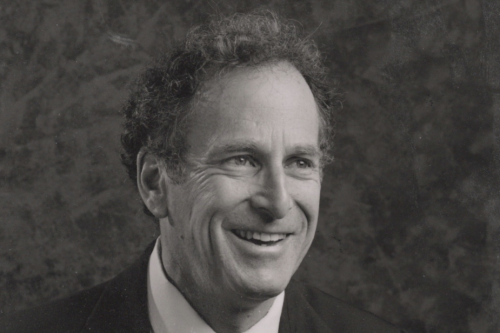By Lilly Goodman-Allwright and Nick Sitar
Richard E. Goodman, a UC Berkeley faculty member from 1964 to 1994, passed away at the age of 89 in Anchorage, Alaska. He received his Ph.D. degree in Engineering Science (Geological Engineering) from the University of California, Berkeley in 1964. He received his B.S. degree in Geology in 1955 and M.S. in Civil Engineering and Economic Geology in 1958, both from Cornell University. He served 30 years on the faculty of the Department of Civil Engineering at U.C. Berkeley rising from an Assistant Professor to Distinguished Professor of Geological Engineering. From 1994 to present he held the position of Emeritus Professor of Engineering.
Through his research and consulting, Professor Goodman made many important contributions in Rock Mechanics and Engineering Geology. Early in his career he developed an apparatus and method for in-situ measurement of rock properties, also known as the “Goodman Jack.” In his pioneering work in identification of failure modes and kinematics of jointed (blocky) rock masses he invented the base friction apparatus, he led the first implementation of a contact element in finite element simulations, and, ultimately, the development of block theory and its applications.
He was passionate about teaching and he mentored 39 PhD students, most of whom were welcomed as family during their doctoral studies and maintained enduring relationships for decades. He was a prolific author with an impressive list of fundamental and advanced texts, including Methods of Geological Engineering in Discontinuous Rocks (1976); Introduction to Rock Mechanics (1980 and 1989); Block Theory and its Application to Rock Engineering, co-authored with Gen-Hua Shi (1984); and Engineering Geology – Rock in Engineering Construction (1993). He also authored the widely-acclaimed historical book Karl Terzaghi – The Engineer as an Artist (1999). In all, he authored or co-authored more than 200 technical papers for journal and conference publications.
His exciting life included spending six months in 1957 in Baffin Island based out of Cape Dorsett, where he worked for Belcher conducting mineral prospecting. He camped amongst the Polar bears in sub-zero temperatures, learned to communicate with the local Inuit people in their language, traveled around the area by dog sled, and survived many harrowing adventures. He was internationally known as a consultant and his consulting took him to every state of the union and throughout South America, Asia, South Africa and Europe.
Professor Goodman won numerous awards, including the E.B. Burwell Award from the Geological Society of America (1977); the Basic Research Award from the U.S. National Committee for Rock Mechanics (1984); and the H. Bolton Seed Medal from the American Society of Civil Engineers (ASCE). He was elected to the National Academy of Engineering (NAE) in 1991 and he was named the Rankine Lecturer by the British Geotechnical Society in 1995. The Norwegian Geotechnical Institute named him as their Terzaghi Fellow for 1995/1996. Among his other honors were the 2000 George F. Sowers Memorial Lecture at Georgia Tech, and the 2000 Civil Engineering History and Heritage Award from ASCE.
Closer to the home front, he was a passionate and brilliant musician. He traveled throughout the Bay Area to sing in opera productions, and in 1979 founded the Berkeley Opera Company with the support of his cellist wife Lillian (Sue) and directed it for 13 years. He put on over 30 full stage productions. He performed over 70 major roles in operas for several companies, including roles such as Figaro, Leporello, Falstaff and Rigoletto.
He was an ardent lover of nature and passionate defender of wildlife and natural resources. He also was an extremely quick wit and always had a pun ready for every conversation. He never concerned himself with what other people thought and was never afraid to stand up for what he believed. Family, friends and colleagues remember him as “a force” and celebrate his eternal “boyish joy”. He is survived by his beloved wife of over 67 years Sue, his daughter Lilly Goodman-Allwright, sons-in laws Michael Allwright and Eric Cohn, and four grandchildren. He was preceded in death by his two daughters Holly Cohn and Paula Goodman and several beloved dogs.

